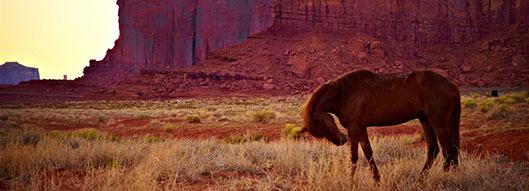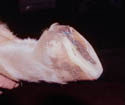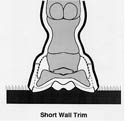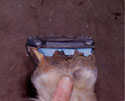HOW TO PREVENT LAMINITIS WITH TREATMENT FOR FOUNDER IN HORSES?
The best thing a horse owner can do to prevent laminitis is to keep the horse healthy and prevent horse founder. Manage the horse and its environment to avoid any of the systemic conditions that are known to trigger laminitis. Feed the horse according to its age, metabolism, and activity with a complete balanced ration using clean quality feed and lots of fresh water. Maintain a healthy body condition with good flesh coverage on the bones but the ribs should be easily felt on the surface. The hair coat should be shiny. Provide shelter from the elements but allow the horse free roaming exercise and company. Provide moderate and varied ground conditions. Practice disease prevention and parasite control. Put the horse to work but minimize the stress in its life.
HOW TO PREVENT HORSE FOUNDER?
Observe the horse on a daily basis. Be aware of situations that may lead to laminitis. Learn to recognize systemic conditions that can trigger laminitis. Watch for early lameness symptoms. Often the symptoms of a systemic condition are very subtle and easily missed. Lameness may be the first sign for a treatment for founder in horses.
React immediately with a sense of emergency. Early intervention within one to three hours can prevent the hooves from foundering or minimize the extent of the hoof damage. Do not wait until tomorrow to see what happens. The laminitis may have been progressing for some time before the situation is noticed. If all the conditions point toward laminitis, then treat it as an emergency now. Remember the old saying: if it looks like… smells like… tastes like… it probably is. If you apply the methods in a timely fashion as described in this presentation, the horse will probably return to full health with no hoof damage. You may wonder if you did any good. But that is much better than letting the hooves fall apart, and causing the horse to suffer intensely for several weeks and lose a year of performance.
Have the vet and farrier travel to the horse. Avoid hauling the horse. The haul could be stressful to the horse and will add strain on the laminae. If hauling is unavoidable, place lots of sawdust on the floor to cushion the sole and unload the wall.
Initiate farrier care to unload the hoof wall. The farrier probably cannot get there immediately, but there are some things the owner can do on a temporary basis to unload the wall. Refer to "methods to unload the hoof wall". Initiate veterinary care to eliminate the laminitis triggering systemic situation. Keep the hoof wall unloaded for five weeks or more to allow time for the horse in general and the laminae specifically to return to normal health.
HOW TO REPAIR THE FOUNDERED FOOT (ACUTE OR CHRONIC)?
Previous methods concentrate on treating the complications without eliminating the cause of the injury. The key to efficient and successful rejuvenation of a horses foundered foot is to unload the hoof wall. This stops the injury process. The complications are minimized. The body can heal itself.
In the early stage of acute laminitis, the build up of serum fluids under the hoof wall and the sole callous are a major source of discomfort to the horse. The fluids cannot normally escape through the thick horny tissue. The horse suffers intense pain as the pressure builds up. After several days, the stagnant fluids can develop into a puss abscess, which can cause deterioration to adjacent healthy tissue including the bone. Provide for mechanical drainage by removing some of the hoof wall in the toe region near the ground. Exposing soft laminae combined with a poultice will allow the fluid to drain from under the hoof wall and from under the sole. Systemic anti-inflammatory agents (bute) can also be beneficial.
Continue to keep the hoof wall unloaded until a new length of hoof wall has grown out. (twelve months). Manage the horse and its environment to enhance the healing process. Provide deep soft ground, good nutrition, and space to move around.
METHODS, TECHNIQUES, PROCEDURES TO UNLOAD THE WALL
To unload the wall it is simply necessary to eliminate the ground surface (rim) of the hoof wall from contacting the ground. With no ground resistance, there can be no forces acting on the wall or the laminae.
On a first aid basis: Remove the shoes. Place the unshod horse on soft sand or sawdust or manure pack. Apply a styrofoam pad or a flat layer of moist sod to the sole of the foot with duct tape.
There are two basic methods the farrier can use to unload the wall.
- Short wall trim: Trim the hoof wall short and at a beveled angle so the sole, bars and frog come in contact with the ground without the wall touching. Use this method only on horses with natural, tough, thick soles. Soft dry ground (sand, saw dust, loam, grass turf, manure pack) must be provided.
- Install a sole support system similar to the 5S Equine Sole Support System: The load is cushioned and distributed over the entire solar surface including the sole, bars, and frog and artificially extends the sole weight bearing surface beyond the rim of the hoof wall and or the shoe. The hoof wall cannot contact the ground. Maximum comfort is provided, regardless of ground conditions. A sole support system is necessary for thin, tender soled feet and where it is impractical to provide soft ground.










